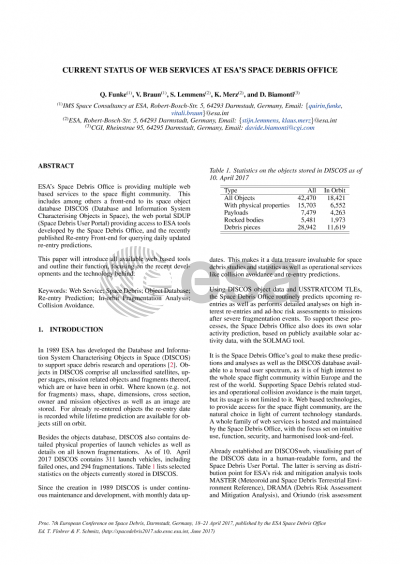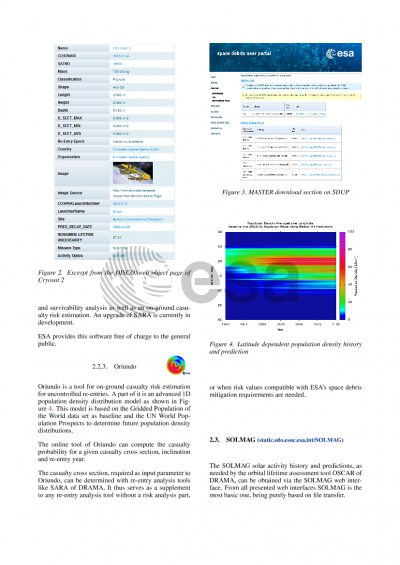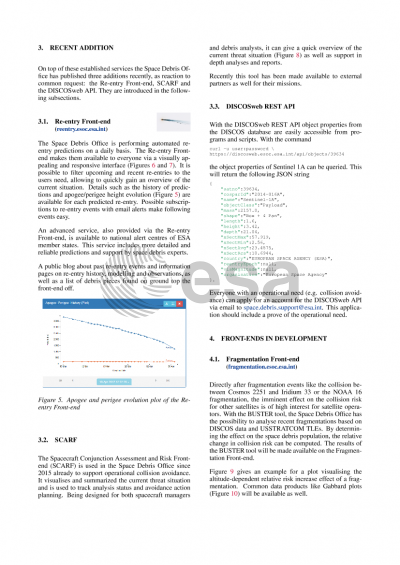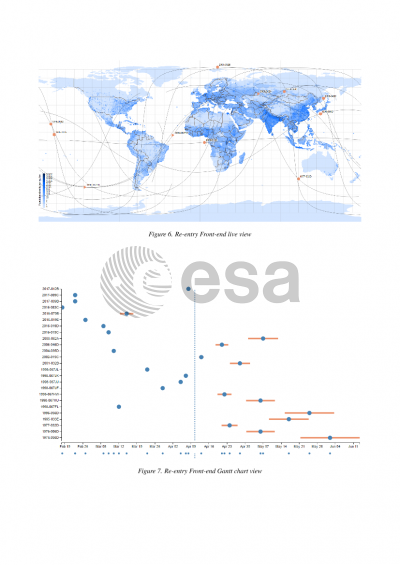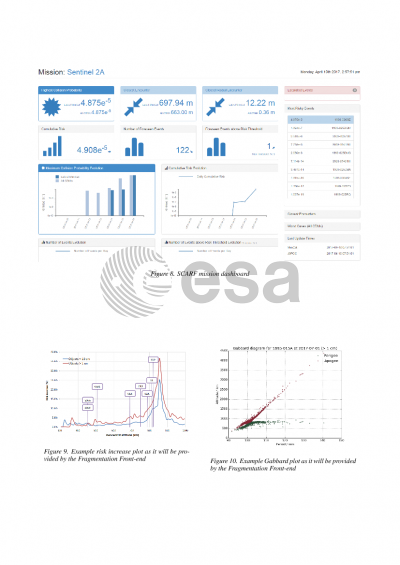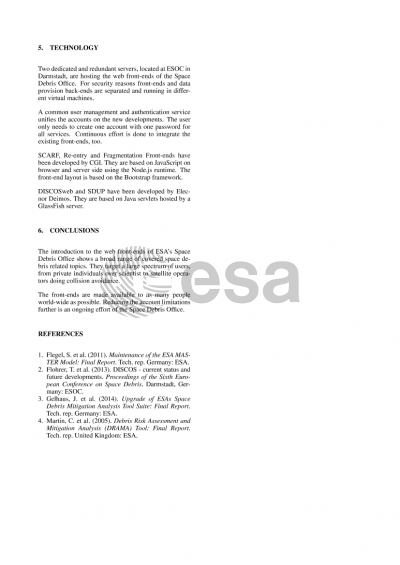Document details

Abstract
With DISCOS (Database and Information System Characterising Objects in Space) ESA’s Space Debris Office has a very powerful database in hands for space debris related analyses. It serves as a reference for launch information, object registration details, launch vehicle descriptions, spacecraft information (e.g. size, mass, shape, mission objectives, owner), as well as orbital data histories for all tracked objects, which sum up to more than 40000 object entries.
Using DISCOS object data and USSTRATCOM TLEs, the Space Debris Office routinely predicts upcoming re-entries as well as performs detailed analyses on high interest re-entries and ad-hoc risk assessments to missions after severe fragmentation events. To support these processes, the Space Debris Office also does its own solar activity prediction, based on publicly available solar activity data, with the SOLMAG tool.
It is the Space Debris Office’s goal to make these predictions and analyses as well as the DISCOS database available to a broad user spectrum, as it is of high interest to the whole space flight community within Europe and the rest of the world. Supporting Space Debris related studies and operational collision avoidance is the main target, but its usage is not limited to it. Web based technologies, to provide access to the space flight community, are the natural choice in light of current technology standards. A whole family of web services is hosted and maintained by the Space Debris Office, with the focus set on intuitive use, function, security, and harmonised look-and-feel.
Already established are DISCOSweb (https://discosweb.esoc.esa.int), visualising the DISCOS data in a human-readable form, and the Space Debris User Portal (https://sdup.esoc.esa.int). The latter is serving as distribution point for ESA’s risk and mitigation analysis tools MASTER (Meteoroid and Space Debris Terrestrial Environment Reference), DRAMA (Debris Risk Assessment and Mitigation Analysis), and Oriundo (risk assessment for uncontrolled re-entries). These are complemented by web pages of more static nature, like the SOLMAG solar activity predictions. In order to facilitate operational collision avoidance, SCARF (Spacecraft Conjunction Assessment and Risk Frontend) has been developed and used within ESA since 2015. It has been made available to third-party collision avoidance customers now.
Recently the Space Debris Office released the re-entry frontend (https://reentry.esoc.esa.int), giving an overview on upcoming space object re-entries and providing detailed analyses for high-interest events. In addition DISCOSweb got upgraded by a machine friendly REST API which can be integrated in, for example but not limited to, collision avoidance processes. About to be released is the fragmentation frontend (https://fragmentation.esoc.esa.int), which will provide up-to-date risk analyses of in-orbit fragmentations and their implications for other missions.
This paper will introduce all available web based tools and outline their function, focusing on the recent developments and the technology behind.
Preview
